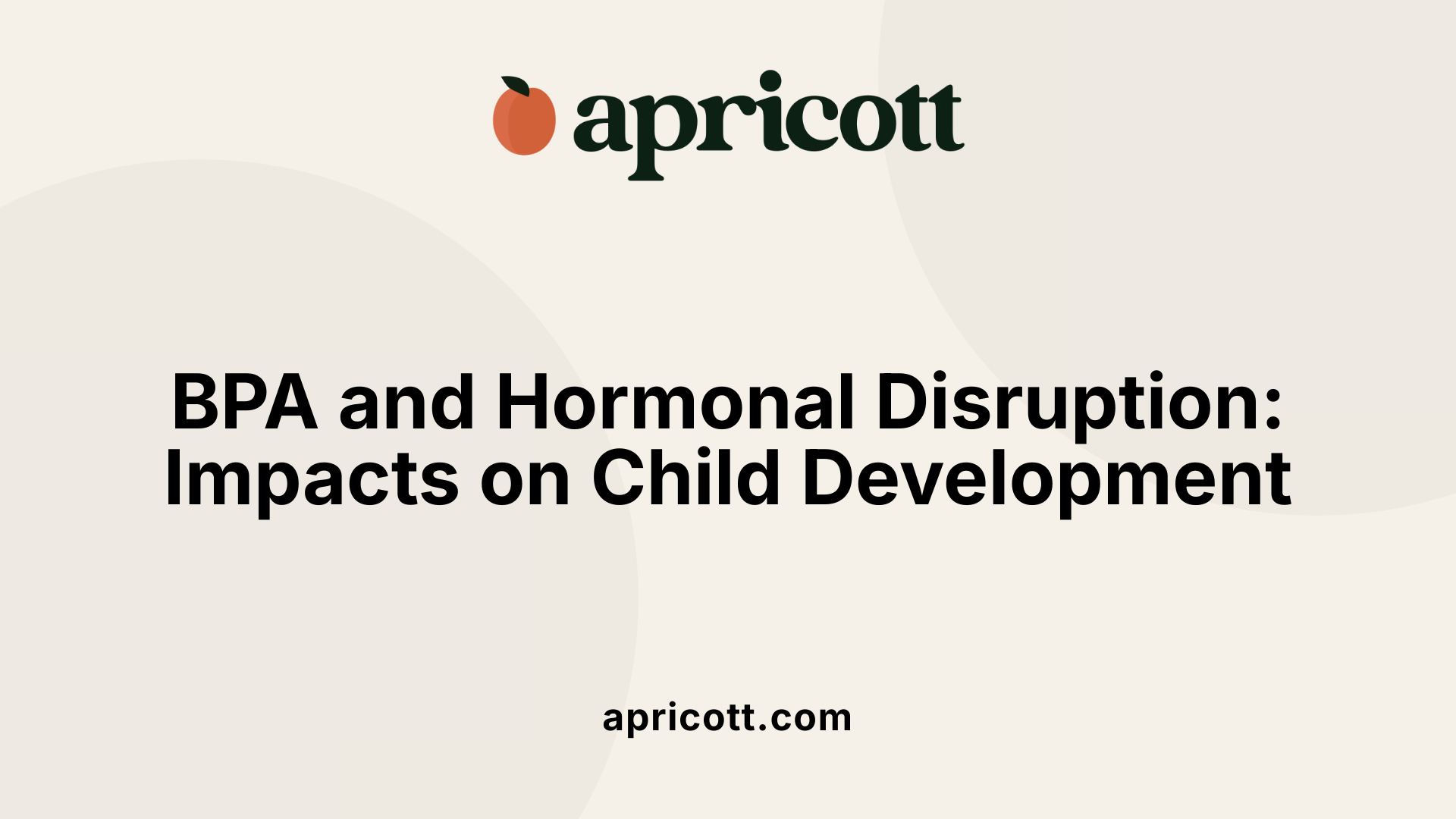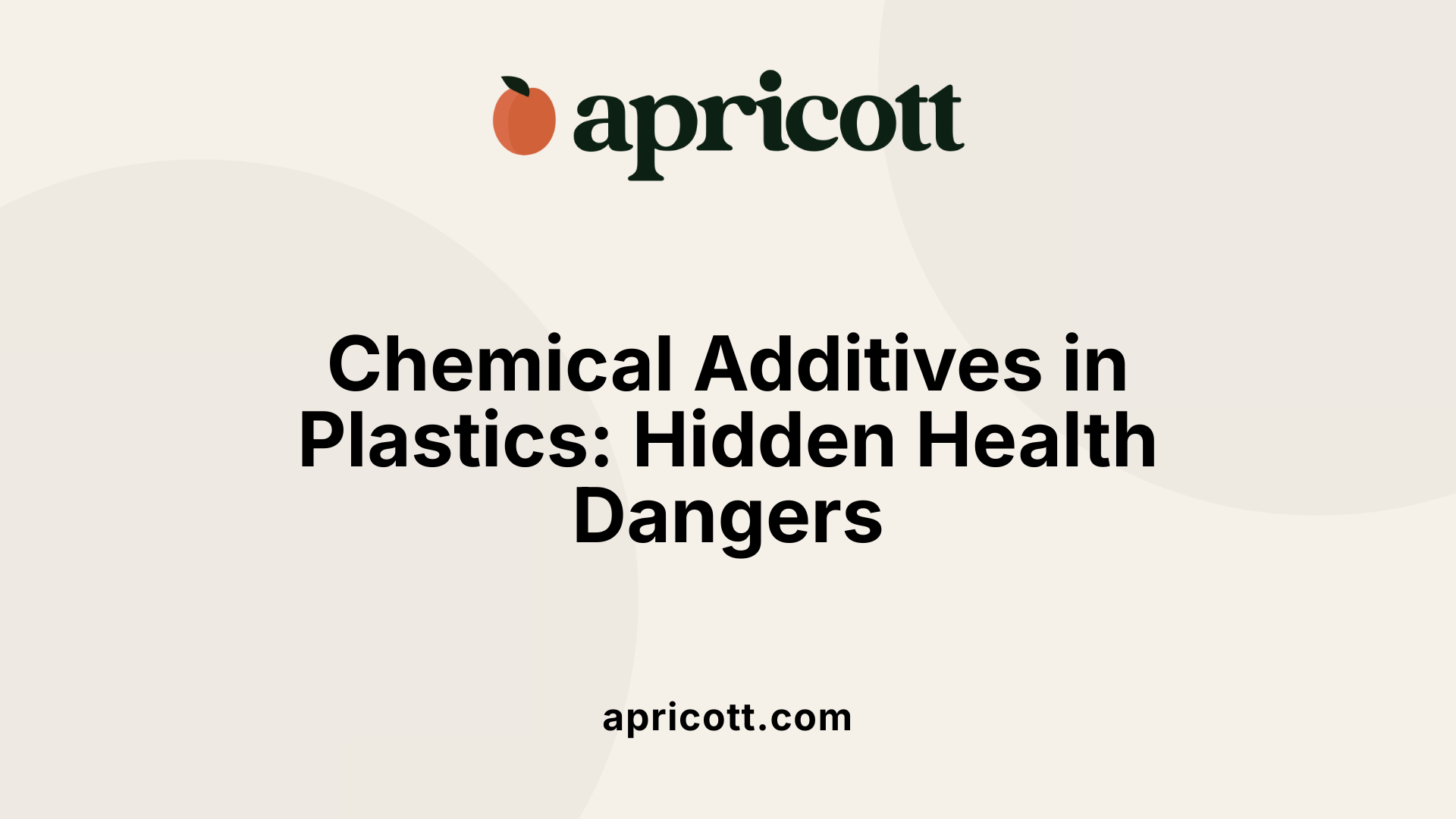August 8, 2025
Unraveling the Complex Link Between Plastic Exposure and Autism
Recent scientific investigations are exploring the intricate relationship between plastic chemicals, microplastics, and their potential influence on autism spectrum disorder (ASD). While conclusive evidence directly linking plastic toys to autism remains elusive, substantial data suggest that exposure to certain plastic components during critical developmental periods may contribute to neurodevelopmental challenges. This article delves into the mechanisms by which plastic chemicals impact child development, reviews current research findings, and discusses the implications for public health and safety.

BPA, or bisphenol A, is a chemical widely used in manufacturing plastics such as food containers, water bottles, and beverage cans. It functions as an endocrine disruptor, meaning it mimics natural hormones like estrogen and can interfere with the body's hormonal balance. BPA has the ability to bind to hormone receptors, altering normal signaling pathways vital for development.
Research shows that BPA can suppress important enzymes like aromatase, which plays a crucial role in male fetal brain development. This suppression can lead to changes in brain structure and function that are associated with neurodevelopmental disorders.
Women exposed to higher levels of BPA during pregnancy are more likely to give birth to boys with autism, according to recent studies. In fact, research monitoring 70 mother-child pairs over a decade found that elevated maternal BPA levels were linked to an increased risk of autism diagnoses in male children.
BPA can cross the placenta, directly exposing the developing fetus to its effects. It can also reach infants via breast milk and through other routes such as inhalation or dermal contact. This early exposure can disrupt normal hormone functions, affecting reproductive organ development, and potentially leading to long-term health issues.
Animal studies support human findings, demonstrating that BPA suppresses aromatase in the brain and causes neurological and behavioral changes similar to autism spectrum disorder. Children born to mothers with high BPA exposure show increased risks for issues like delayed puberty, behavioral difficulties, and cognitive problems.
BPA's interference extends beyond neurodevelopment—it can influence reproductive health and metabolic processes. The disruption of hormone functions may contribute to conditions like obesity, diabetes, and early onset of puberty.
| Impact Area | Effects | Evidence Source |
|---|---|---|
| Brain Development | Autism, delays, behavioral issues | Human and animal studies |
| Reproductive System | Fertility problems, early puberty | Clinical research |
| Immune System | Increased inflammation, immune disruption | Laboratory studies |
| Metabolism | Obesity, diabetes | Epidemiological data |
These findings emphasize the importance of limiting BPA exposure during pregnancy. As research advances, regulations and public awareness are crucial for protecting future generations from avoidable chemical risks.

Research indicates that exposure to plastics and their chemical components may play a role in neurodevelopmental disorders like autism spectrum disorder (ASD). Animal studies have provided significant insights; for instance, experiments with mice have shown that prenatal exposure to microplastics, such as polyethylene, can lead to ASD-like behaviors.
These studies reveal that microplastics can cause neuroinflammation, alter gene expression, and change brain chemistry, all of which are factors involved in neurodevelopment. Such findings suggest potential biological pathways through which plastics could impact fetal brain development.
In humans, exposure to endocrine-disrupting chemicals (EDCs) like bisphenol A (BPA) and phthalates, which can leach from plastics, has been linked to an increased risk of autism. During critical periods of development, these chemicals may interfere with hormonal signals essential for normal brain development.
While establishing direct causality in humans remains complex due to the influence of genetics and other environmental factors, the body of evidence underscores a potential association. Exposure to plastic sources during pregnancy could influence neurodevelopment, raising concerns about the safety of plastics in everyday products such as food containers, bottles, and toys.
Overall, scientific findings highlight the importance of further research into how plastics and their chemical components may contribute to autism risk, especially considering how widespread plastic use and microplastics are globally.

Plastics often contain chemical additives such as bisphenol A (BPA) and phthalates, which are used to harden plastics or improve flexibility. These chemicals are classified as endocrine disruptors because they can mimic natural hormones like estrogen and androgen. When plastics are used in food packaging, bottles, or toys, these additives can leach into food, beverages, or come into direct contact with skin, especially when the plastics degrade.
Research indicates that exposure to BPA and similar chemicals during pregnancy can affect fetal development. For instance, higher urinary BPA levels in mothers are associated with an increased likelihood of giving birth to sons diagnosed with autism. BPA can interfere with hormone-controlled processes in the developing male fetal brain by suppressing the aromatase enzyme, crucial for male brain development. This suppression has been linked to behavioral and neurological changes similar to those seen in autism spectrum disorder.
Beyond chemical additives, plastics also break down into microplastics (MPs) and nanoplastics, which are tiny particles that contaminate oceans, soils, and air. These particles are now detected in various ecosystems and even within human tissues, including the liver, kidneys, and placentas. The ingestion or inhalation of MPs exposes humans to risks such as inflammation, oxidative stress, DNA damage, and disruption of microbiota, all of which can lead to chronic health conditions.
The widespread presence of plastics in everyday life—through contaminated water (81% of tap water globally), food, and consumer products—exposes individuals, especially children, to these pollutants. Children tend to mouth toys, lick objects, and chew plastics more frequently, increasing their risk of chemical and particle intake. Moreover, plastics can contain carcinogenic and other harmful chemicals that leach into drinking water and food, further contributing to reproductive, neurological, and immune health issues.
The cumulative impact of these pollutants extends beyond individual health. They contribute to ecological degradation, climate change, and habitat destruction, which in turn indirectly affects human well-being. As the scientific understanding of these risks advances, it is driving public safety regulations aimed at reducing chemical exposure during critical development periods, such as pregnancy and early childhood. Ongoing research seeks effective treatments and interventions, like 10-hydroxy-2-decenoic acid, to counteract the harmful effects of BPA and similar disruptors.
| Source of Pollutant | Common Items | Potential Health Impact | Notes |
|---|---|---|---|
| BPA and Phthalates | Food containers, bottles, linings | Hormonal disruption, Autism risk, reproductive issues | Widely used in plastics, leaching into products |
| Microplastics | Marine debris, cosmetics, textiles | DNA damage, inflammation, organ damage | Found in many foods and beverages |
| Finely divided plastics | Inhaled particles | Respiratory problems, neurological damage | Airborne, ingested, inhaled |

Recent research suggests that exposure to microplastics and certain chemicals during early life stages may pose significant health risks, including potential links to autism. Microplastics, tiny particles originating from both manufactured sources and the breakdown of larger plastics, are now found in various human tissues. They can cross biological barriers during pregnancy, reaching the placenta and developing fetus, which raises concerns about their influence on neurodevelopment.
Microplastics have been detected in food, water, and even in bottled drinks, demonstrating their pervasive presence. Ingested or inhaled microplastics can bioaccumulate, leading to cellular damage, inflammation, and oxidative stress—all of which are associated with developmental disorders.
Animal studies add to this concern.
| Microplastic Components | Impact Observed | Potential Developmental Effects |
|---|---|---|
| Polyglycolic acid (PGA) | Causes morphological brain abnormalities | Impairs neural development |
| Polylactic acid (PLA) | Leads to neurobehavioral changes | May support autism-like traits |
| Chemical adsorbed on MPs | Carry toxic additives and hormones | Disrupt endocrine functions |
These findings point to possible mechanisms by which microplastics and their chemical cargo could interfere with normal brain development. They can disturb hormonal systems, such as by disrupting the enzyme aromatase, which is important for male fetal brain development, or trigger inflammatory responses detrimental to neural health.
Children are especially vulnerable to these effects because of behaviors like mouthing toys and ingesting dust, combined with their ongoing brain development. The risk is compounded when chemicals like BPA and phthalates, which mimic hormones, enter their bodies. These chemicals can affect not only neurodevelopment but also reproductive health, immune function, and metabolism.
While research is ongoing, the accumulated evidence underscores the importance of reducing early life exposure to microplastics and endocrine-disrupting chemicals. Protecting the youngest members of society from such pollutants could decrease the risk of neurodevelopmental disorders, including autism, and support healthier growth and development.

Yes, plastic toys are widely used in autism therapy because they offer multiple developmental advantages. These toys, especially sensory-focused ones like fidget spinners, textured balls, and other tactile objects, help children with autism develop better sensory processing skills. They can make it easier for children to focus and manage anxiety during therapy sessions.
In assessments, plastic toys also serve an important purpose by revealing a child's sensory preferences and sensitivities. This information helps therapists tailor interventions to each child's unique needs, creating more effective therapy plans.
Beyond sensory development, plastic toys support broader growth in social, emotional, and cognitive areas. During play, children learn social skills such as sharing and turn-taking. They also work on emotional regulation as they explore different textures and respond to sensory input.
Although plastic toys are not cures for autism, they are valuable tools that encourage engagement and promote developmental progress. Their versatility and accessibility make them a core part of many therapy programs, helping children with autism reach key milestones in their growth.
While current research suggests that exposure to certain plastic chemicals and microplastics may be linked to neurodevelopmental disorders such as autism, definitive causal relationships remain under investigation. Experts agree that minimizing exposure during pregnancy and early childhood can be a prudent public health strategy. Moreover, plastic toys and products, when used appropriately, offer therapeutic benefits for children with autism, supporting sensory and social development. As scientific understanding advances, it becomes crucial for consumers, policymakers, and healthcare providers to balance potential risks with benefits, promoting safer plastics and reducing unnecessary exposure to environmental pollutants.